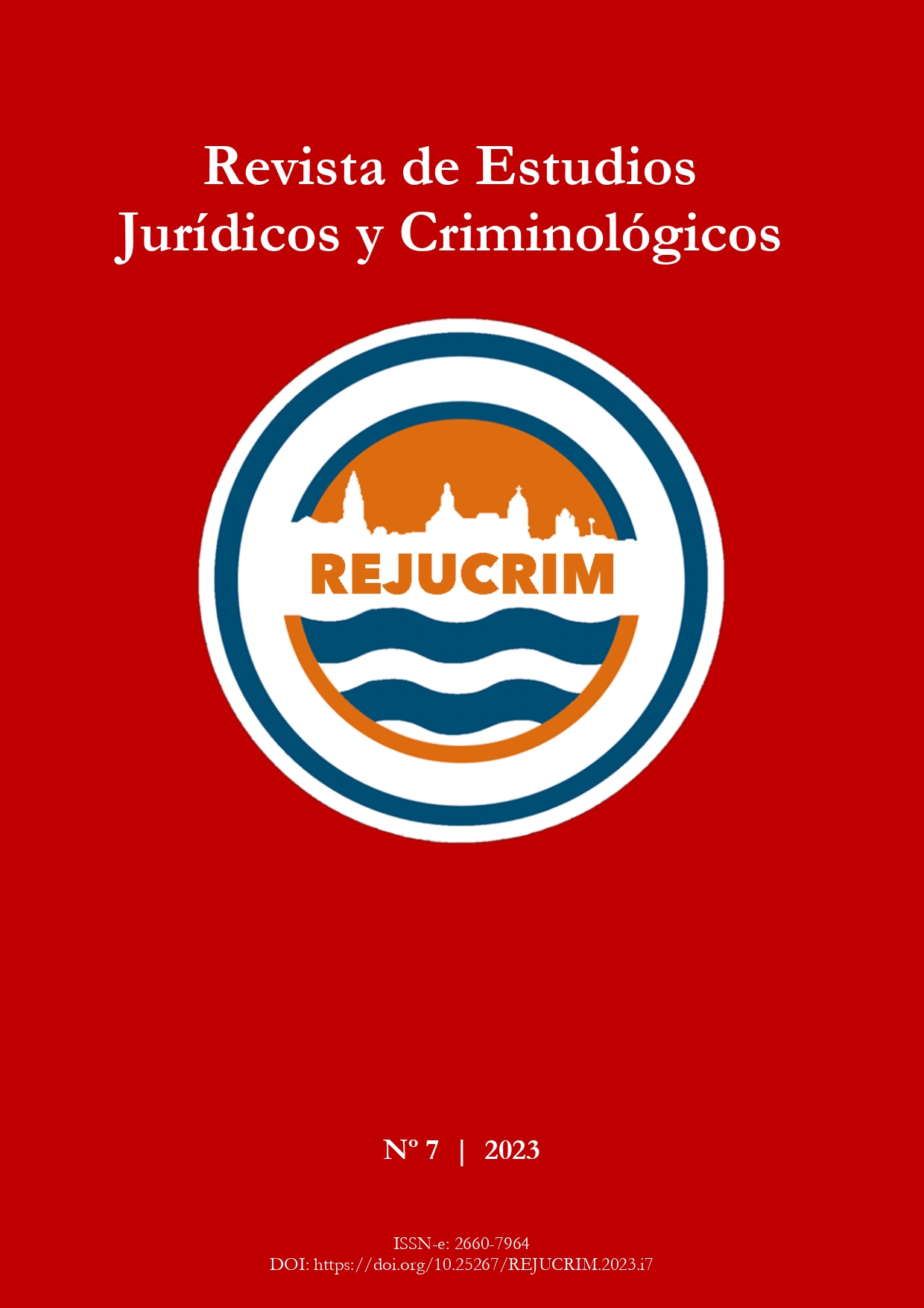Medición y mapeo de la concentración de delitos en micro lugares
Résumé
La Criminología Ambiental estudia la geografía del delito que tiene una calidad inherentemente geográfica ya que ocurre en un espacio determinado. En este marco, se analiza la distribución espacial del delito para identificar puntos calientes (hot spots) que revelan información sobre dónde éste se concentra, es decir, dónde los delitos ocurren con mayor frecuencia. Los puntos calientes, además, revelan información útil sobre el entorno donde ocurre el delito. Si bien existen distintas metodologías para medir la concentración delictiva, la más difundida es la de la Ley de Concentración del Delito que utiliza micro lugares que consisten en segmentos de calle. Con esta metodología, en el presente trabajo se analizaron distintos tipos de delitos ocurridos en la Ciudad Autónoma de Buenos durante el año 2021: primero se midieron las concentraciones de estos delitos de acuerdo a los rangos específicos de la Ley de Concentración del Delito y, segundo, se mapearon los resultados utilizando un Sistema de Información Geográfica (SIG). Esto permitió generar mapas de puntos calientes que muestran la concentración del delito en segmentos de calles constituyéndose en herramientas útiles para la prevención del delito.
Mots-clés
Téléchargements
Comment citer
Licence
(c) Tous droits réservés Pedro Rozenwurcel 2023

Ce travail est disponible sous licence Creative Commons Attribution - Pas d'Utilisation Commerciale - Pas de Modification 4.0 International.
Références
AMEMIYA, M. y OHYAMA, T., “Toward a test of the “Law of Crime Concentration” in Japanese cities: a geographical crime analysis in Tokyo and Osaka”, Crime Science, 8, 2019.
ÁNGELES, G., y GENTILI, J. “Cartografía General y Temática”. Departamento de Geografía y Turismo, Universidad Nacional del Sur, Buenos Aires, 2010.
BECK, J. y DELANEY, C., “Problem Location Analysis using the Crime Analysis Solution. Law Enforcement and Justice”, en https://www.esri.com/en-us/industries/blog/articles/problem-location-analysis-using-the-crime-analysis-solution/, 2021.
BERNASCO, W. y STEENBEEK, W., “More Places than Crimes: Implications for Evaluating the Law of Crime Concentration at Place”, Journal of Quantitative Criminology, 33, 2017.
BRAGA, A. A., HUREAU, D. M. y PAPACHRISTOS, A. V., “The Relevance of Micro Places to Citywide Robbery Trends: A Longitudinal Analysis of Robbery Incidents at Street Corners and Block Faces in Boston”, Journal of Research in Crime and Delinquency, 48(1), 7–32, 2011.
BRANTINGHAM, P. J. y BRANTINGHAM, P. L., “Criminality of Place: Crime Generators and Crime Attractors”, European Journal of Criminal Policy and Research, 3: 5– 26, 1995.
CHAINEY, S. “Understanding Crime”. Esri Press. Edición de Kindle, 2021.
CHAINEY, S. y RATTCLIFFE, J. “GIS and Crime Mapping”. John Wiley & Sons, Ltd, England, 2005.
CHAINEY, S., PEZZUCHI, G., ROJAS, N., RAMÍREZ, J., MONTEIRO, J. y VALDEZ, E., “Crime concentration at micro-places in Latin America”, Crime Science, 8, 2019.
COHEN, L. E. y FELSON, M., “Social change and crime rate trends: A routine activities approach”, American Sociological Review, 44 (4), 1979, pp. 588–608.
DEL BOSQUE GONZÁLEZ, I., FERNÁNDEZ FREIRE, C., MARTÍN-FORERO MORENTE, L., y PÉREZ ASENSIO, E. “Los Sistemas de Información Geográfica y la Investigación en Ciencias Sociales y Humanas”, ed. C. E. de C. de E. Locales, Madrid, 2012.
ECK, J. E. y WEISBURD, D., “Crime places in crime theory”, Crime and place. Crime Prevention Studies, Monsey, NY: Willow Tree Press, vol. 4, 1995, pp. 1–33.
ESRI, “¿Qué son los datos ráster?”, en https://desktop.arcgis.com/es/arcmap/10.3/manage-data/raster-and-images/what-is-raster-data.htm, consultado el 05/10/2022.
GILL, C., WOODITCH, A. y WEISBURD, D, “Testing the Law of Crime Concentration at Place in a Suburban Setting: Implications for Research and Practice”, Journal of Quantitative Criminology, 33, 2017.
GROFF, E. R., WEISBURD, D. y YANG, S.-M, “Is it Important to Examine Crime Trends at a Local ‘“Micro”’ Level?: A Longitudinal Analysis of Street to Street Variability in Crime Trajectories”, Journal of Quantitative Criminology, 26, 2010, pp. 7–32.
GROFF, E., “Informal social control and crime events”, Journal of Contemporary Criminal Justice, 31, 2015, pp. 90-106.
HIPP, J. R., y WILLIAMS, S. A., “Accounting for Meso or Micro Level Effects When Estimating Models Using City Level Crime Data: Introducing a Novel Imputation Technique”, Journal of Quantitative Criminology, 37(4), 2020, pp, 915-951.
IGARZÁBAL DE NISTAL, M. A. (2011). “Mapa del delito”, Editorial Nobuko, Buenos Aires, 2011.
KIM, S., LAGRANGE, R. y WILLIS, C., “Place and Crime: Integrating Sociology of Place and Environmental Criminology”, Urban Affairs Review, 2012, pp. 49–141.
LEE, Y., ECK, J. E., SOOHYUN, O, y MARTÍNEZ, N. N. (2017). “How concentrated is crime at places? A systematic review from 1970 to 2015”. Crime Science, 6(6), 2017, pp. 1-6.
MIRAGLIA, M., FLORES, A. P., RIVAROLA y BENÍTEZ, M., D´LIBERIS, M., GALVÁN, L., NATALE, D., y RODRÍGUEZ, M., “Manual de Cartografía, Teleobservación y Sistemas de Información Geográfica”, Laboratorio de Sistemas de Información Geográfica, Instituto del Conurbano, Universidad Nacional General Sarmiento, Buenos Aires, 2010.
OLAYA, V., “Sistemas de Información Geográfica”, extraído de https://www.icog.es/TyT/files/Libro_SIG.pdf, 2014.
PIZA, E., y CARTER, J., “Predicting Initiator and Near Repeat Events in Spatiotemporal Crime Patterns: An Analysis of Residential Burglary and Motor Vehicle Theft”, Justice Quarterly, 35, 2017.
RATCLIFFE, J., “Crime Mapping: Spatial and Temporal Challenges”, Handbook of Quantitative Criminology, Piquero, D. y Weisburd, A. R. editores, Springer, 2010.
SANTOS, R. B., “Crime Analysis with Crime Mapping”. Sage Publications Inc., 2005.
SANTOS, R. B. “Crime Analysis with Crime Mapping”, Fourth Ed. SAGE, United States of America, 2017.
SHERMAN, L. W., GARTIN, P. y BUERGER, M. E. (1989), “Hot spots of predatory crime: Routine activities and the criminology of place”, Criminology, 27 (1), 1989, pp. 27–55.
WEISBURD, D. (2015). “The law of crime concentration and the criminology of place”. Criminology, 53 (3), 2015, pp. 133–157.
WEISBURD, D., GROFF, E. R., y YANG, S. M., “The Criminology of Place”, Oxford University Press, 2012.
WORTLEY, R. y MAZEROLLE, L., “Environmental Criminology and Crime Analysis: situating the theory, analytic approach and application”, Environmental Criminology and Crime Analysis, Willan Publishing, 2008, pp. 1–18.







